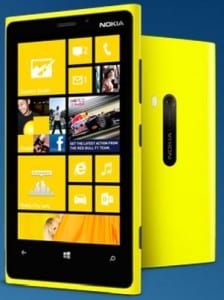 I have to say, when I heard about the HTC “What’s next” event, I had that tingling feeling that HTC will go back to its Windows Mobile roots. Sure enough, they did, and now they are officially part of the Windows 8 rise to power.
I have to say, when I heard about the HTC “What’s next” event, I had that tingling feeling that HTC will go back to its Windows Mobile roots. Sure enough, they did, and now they are officially part of the Windows 8 rise to power.
Much like the current trend of launching a full powered and more expensive device alongside a lower end version for the budget conscious, HTC launched two devices. The higher end HTC 8X makes use of all HTC has to offer, while the HTC 8S is smaller and devoid of some features like the dedicated amplifier in the 8X.
Why am I comparing it to the recently released Lumia 920? Simply because if Nokia was Apple, they would have dragged Judge Lucy Koh to see what HTC cooked up. Quite simply, the HTC 8X looks stunningly similar to a Lumia 920.
The 8X is “dipped in color” similar to how the Nokia Lumia 920 is one of the most colorful bunch of phones we have ever seen. Nokia went for a more edgy design, while HTC made use of rounded corners. Both of them are brightly colored, reflecting the colorful live tiles of the Windows 8 operating system inside these devices.
So they look similar, but will they deliver similarly as well? Let’s take a closer look at these upcoming phones.
Display
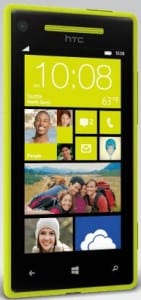 One cannot argue that this holiday season has a lot to do with displays. Samsung launched the larger than ever Galaxy Note 2, Apple came out with a taller iPhone 5, while other manufacturers like Nokia took Retina to a whole new level.
One cannot argue that this holiday season has a lot to do with displays. Samsung launched the larger than ever Galaxy Note 2, Apple came out with a taller iPhone 5, while other manufacturers like Nokia took Retina to a whole new level.
Apple, the first to launch a Retina class display still has a 326 ppi pixel density. Nokia took that further to a 332 ppi display, but HTC thought it wasn’t enough, and pushed it further to a 342 pixels per inch. Judging from the numbers, HTC’s phone is set to have the sharpest display of the bunch.
Compared to the Lumia 920’s 4.5 inch display, HTC only has a smaller 4.3 inch display. The smaller display is probably how they afforded the extra sharp resolution. The main difference now is how good the devices will be against the power of the sun. Nokia is pretty confident, while HTC has made no mention of it.
Power
For both devices, you are assured in terms of performance power. They both run on the same Snapdragon processor, both clocked at 1.5 GHz. The only question now is if the sharper display on the 8X with more pixels will hinder the processor’s capabilities or not. Both of them sport a familiar 1 GB of RAM, which is sufficient for Windows 8 apparently.
Juice
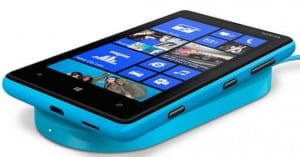 All that power doesn’t do it much good if it runs out of juice quickly. The 8X disappoints with just 1800 mAh, compared to the Nokia Lumia 920 with a good 2000 mAh. Unfortunately, both of them are embedded into the device, so your only solution for longer life on the road is to carry a power bank.
All that power doesn’t do it much good if it runs out of juice quickly. The 8X disappoints with just 1800 mAh, compared to the Nokia Lumia 920 with a good 2000 mAh. Unfortunately, both of them are embedded into the device, so your only solution for longer life on the road is to carry a power bank.
Sound
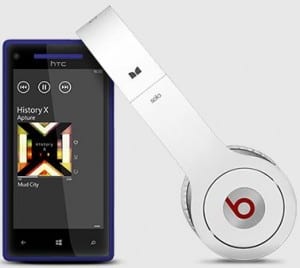 As expected, Beats Audio makes its debut on the 8X, the first Beats certified device for Windows 8. The Nokia Lumia 920 on the other hand makes use of Dolby’s digital audio. It’s a matter of who you trust in terms of audio. My bet is with Dolby, but Beats Audio is certainly a very competitive feature.
As expected, Beats Audio makes its debut on the 8X, the first Beats certified device for Windows 8. The Nokia Lumia 920 on the other hand makes use of Dolby’s digital audio. It’s a matter of who you trust in terms of audio. My bet is with Dolby, but Beats Audio is certainly a very competitive feature.
Connectivity
Both devices make use of the standard connectivity options found in today’s smartphones, such as Wi-Fi, Bluetooth and NFC. You may want to know that the HTC 8X backtracks with Bluetooth 2.1 while the Nokia Lumia 920 makes use of Bluetooth 3.1. For the record, the latest would be Bluetooth 4.0.
Camera Quality
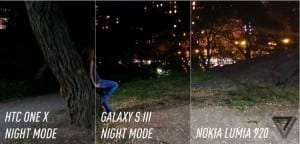 This is an area where the Lumia 920 is expected to shine once they get the PureView technology to actually work. HTC makes use of the same camera found on their HTC One X, which was known for being better than the Galaxy S3’s camera. There is not much to say here since both are mostly untested, but in terms of potential, the Lumia 920 certainly has a head start.
This is an area where the Lumia 920 is expected to shine once they get the PureView technology to actually work. HTC makes use of the same camera found on their HTC One X, which was known for being better than the Galaxy S3’s camera. There is not much to say here since both are mostly untested, but in terms of potential, the Lumia 920 certainly has a head start.
One thing I am quite happy about in the 8X is the better front facing camera, rated at 2.1 megapixels. It is capable of recording 1080p videos which is perfect for video blogging and simply taking a good picture of yourself with your friends.
Special Features
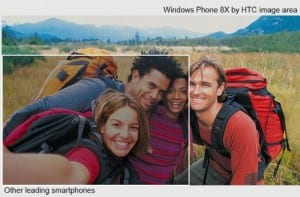 From what we gather about the Windows 8 operating system, there is not much you can do in terms of “skinning” the operating system as much as OEMs did on Android. Everything will look pretty much the same save for some add on applications that the manufacturers have at their disposal.
From what we gather about the Windows 8 operating system, there is not much you can do in terms of “skinning” the operating system as much as OEMs did on Android. Everything will look pretty much the same save for some add on applications that the manufacturers have at their disposal.
Nokia is certainly on a huge advantage here, with their Nokia Maps, City Lens, Wireless Charging, Free Music streaming, and Nokia Drive. The HTC 8X may have Beats Audio, but that is certainly not enough to make a case against Nokia in this department.
Availability
 Let’s give a good round of applause for HTC’s connections. At the very least, they are not as vague in terms of availability and pricing. The device is set to appear in November, to about 150 carriers in 50 different countries. They are certainly ready for a worldwide approach. Nokia has yet to announce their plans regarding the matter.
Let’s give a good round of applause for HTC’s connections. At the very least, they are not as vague in terms of availability and pricing. The device is set to appear in November, to about 150 carriers in 50 different countries. They are certainly ready for a worldwide approach. Nokia has yet to announce their plans regarding the matter.
Conclusion
 Since Windows 8 will generally be the same on all devices, added features are really the only way to make a device the “better choice” between OEMs. It doesn’t help that both of them roughly have the same internal specifications, with Nokia being a step up above HTC in many cases. Right now, my bet is on Nokia. They are more desperate, hungrier, and definitely more aggressive at trying to aim for the top. HTC still lacks the core appeal and features that are necessary to enter a market that will soon grow saturated.
Since Windows 8 will generally be the same on all devices, added features are really the only way to make a device the “better choice” between OEMs. It doesn’t help that both of them roughly have the same internal specifications, with Nokia being a step up above HTC in many cases. Right now, my bet is on Nokia. They are more desperate, hungrier, and definitely more aggressive at trying to aim for the top. HTC still lacks the core appeal and features that are necessary to enter a market that will soon grow saturated.
Image sources: htc.com, nokia.com, theverge.com












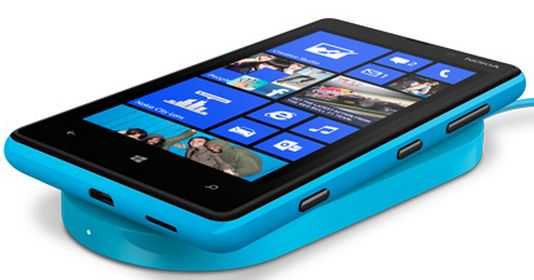




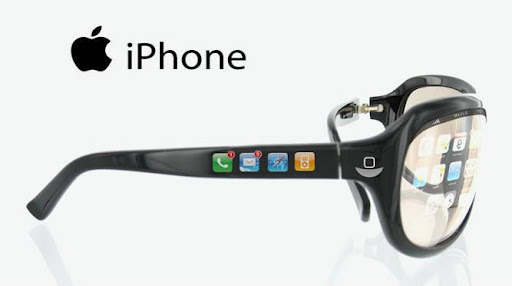


good info!
Comments are closed.